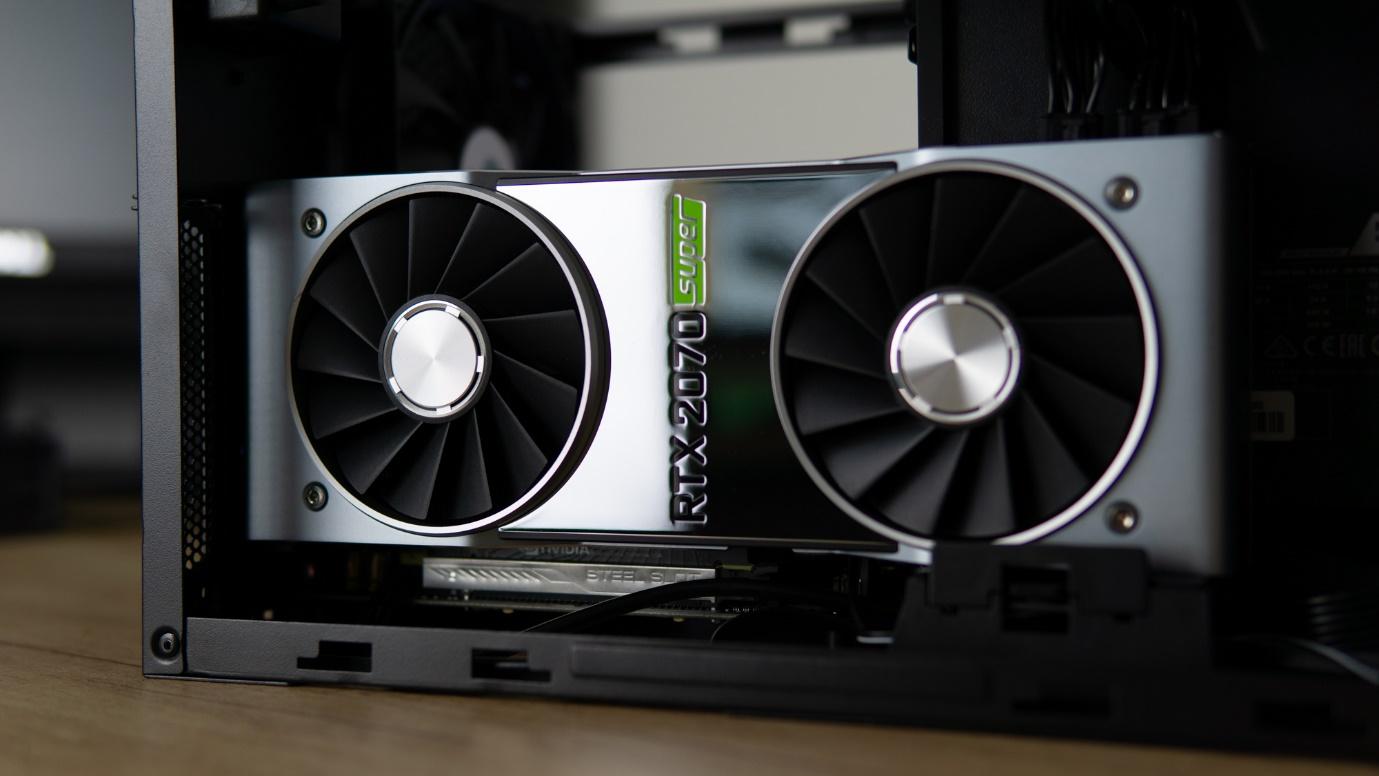Why you can trust Tom's Hardware
We are using the following system for today’s testing
| CPU | Intel Core i5-9600K |
| Motherboard | ASRock Z390 Phantom Gaming-ITX/ac |
| Memory | Corsair Vengeance LPX 3200 MHz, 16 GB (2x 8GB) |
| Graphics | Nvidia GeForce RTX 2070 Super Founder’s Edition |
| CPU Cooling | Corsair H100i Elite Capellix |
| Storage | Corsair Force Series MP600 NVMe SSD, 500GB |
| Power Supply | Phanteks Amp 650 |
Step 1: Installing the PSU



I decided to start this build by installing the power supply. At first I was a little puzzled about how I was supposed to slide it in, but I hadn’t removed the bottom panel. Here, a slot is present to slide the PSU into for very easy installation.
Our large Corsair HX750i wouldn’t fit in this low-height case, but we have a standard ATX form factor PSU from Phanteks available that we used.
Step 2: Motherboard


The motherboard dropped right into place after this without any fuss.
Step 3: Cable Management

I decided that although the system isn’t done yet, once the AIO and GPU are installed, getting to the ports on the motherboard would become quite a challenge. I therefore installed most of the cables at this point, with only the GPU’s PCIe power connectors and AIO fan connectors left for later.
The SG14 doesn’t really do much in the way of cable management, which with a big ATX PSU is a bit annoying as you end up with a lot of cable slack you need to tuck away, but given that it’s a case that doesn’t have any glass, I don’t really mind.
Step 4: GPU Install


Our Founders Edition RTX 2070 Super dropped right into place without any fuss. As you can see, there is plenty of space remaining for the big RTX 3080 or RTX 3090 GPUs of today, and with access to fresh air straight through the side panel, thermal performance should be decent, too.
Get Tom's Hardware's best news and in-depth reviews, straight to your inbox.
Step 5: AIO Installation


I then installed the Corsair H100i Elite Capellix AIO watercooler. This was a bit of a challenge with the tight space, but by installing the CPU block first, and then the radiator it was manageable. The only thing I didn’t like about this step was connecting up the RGB headers and fan controls to the Commander hub. There wasn’t a lot of room for the hib, so I placed it where the internal 2.5-inch drive would have gone.
Step 6: Build Complete

All things considered, this was one of the easiest ITX cases I’ve ever built in. The build process was straight forward, and the ability to build from the inside outwards with all panels removed makes it surprisingly easy to get to everything you need to. Of course, if you need to get to the motherboard, you’ll need to remove the AIO and graphics card first, but this case should be pleasantly easy to service over the course of ownership.
MORE: Best Cases
MORE: All Case Content
Current page: Hardware Installation
Prev Page Features and Specifications Next Page Testing and ConclusionNiels Broekhuijsen is a Contributing Writer for Tom's Hardware US. He reviews cases, water cooling and pc builds.
-
zodiacfml Nice but pricey. I'd pay $40-50 but PC cases could be redundant and I will experiment an open air system soon.Reply -
g-unit1111 I'm seriously thinking of building a full ITX rig at some point and have been case shopping. I like Silverstone cases for this purpose and have used them in the past. This looks interesting for sure.Reply -
G Master Reply
Those are known as "dust magnets". You'll see.zodiacfml said:Nice but pricey. I'd pay $40-50 but PC cases could be redundant and I will experiment an open air system soon. -
Mr5oh "classic 5.25-inch optical drive – when’s the last time you saw that?"Reply
Silverstone understands what the case might actually be used for? I have three HTPCs, all in Silverstone cases all with optical drives. If you use a PC as a media machine you may actually want to play DVDs / BluRays in it. Just a thought. -
kyzarvs ReplyMr5oh said:"classic 5.25-inch optical drive – when’s the last time you saw that?"
Silverstone understands what the case might actually be used for? I have three HTPCs, all in Silverstone cases all with optical drives. If you use a PC as a media machine you may actually want to play DVDs / BluRays in it. Just a thought.
I use mine for the DVD copy of San Andreas so I still have the radio stations... Finished a playthrough over Christmas -
Glock24 "Against:Reply
Looks plain"
I'll count that as a pro, not everything needs RGB LEDs or flashy tribal decorations or funky colors. Plain is nice, plain is elegant. -
Giroro This seems like a good case that I would consider for a mini ITX build.Reply
But the "U3, U2" labeling on the front USB rubs me the wrong way a bit. That's not really normal, so it makes me wonder "what else isn't normal".
It's like buying Ikea furniture, where everything is almost right, but still just a little bit off". For example the 'PC gaming' desk I bought at Ikea with a computer shelf that is about half an inch too short to fit 90% of the popular mid-tower cases on the market, even though they had room to easily make the shelf 2 inches taller and fit almost everything.
A mini itx case would fit the desk, though. -
MrAOK 14" deep is way too deep for an ITX build. It defeats the purpose of having an ITX buildReply
